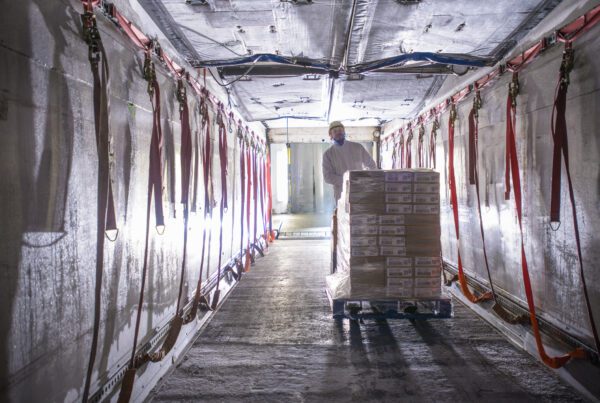As inflation developed into the bellwether for every trend, from elections to popular Christmas toy predictions, consumers continue to face higher food prices from several different directions. Inflation is a situation that doesn’t have a simple fix unfortunately. It is not just around producing more oil. The supply chain chaos, rate increases, labor shortages and equipment imbalances have driven up the transportation costs associated with food products, especially in the perishables space. Climate change has also reckoned with crops this year as droughts, late spring rains, and soon, wildfires take their toll on food. It totals up to a bad, yet not unexpected, sign that difficulties are less like a domino effect and more of a swirling vortex of concerns.
Fruit shipments are often hit by several mitigating factors, from weather issues in the spring impacting the cherry harvest in the Pacific Northwest to mango exports moving from Brazil to meet the European demand, but prices remain high. A reduction in fruit supplies with increasing demand is a hard economic problem to solve even with a pandemic’s worth of mitigating circumstances. Add in capacity issues, equipment scarcity, continued labor shortages, knockdown effects of exchange rate fluctuation and possible ocean freight re-congestion with possible work stoppages or slowdowns at assorted ocean ports being a possibility. Consumers are finding fewer options and more frustration within their budgets.
On top of traditional fluctuations in crop harvests, severe droughts have caused rivers in China and Europe to fall to dangerously low levels, creating issues for barge services that move cargo via inland waterways which are critical transportation arteries. The Yangtze and Rhine rivers are at critical points this week, and in places like Dallas, the extreme drought ended with flooding after receiving a summer’s worth of rain over a weekend.
These delays mean that before the goods start moving, there should be an anticipation that something bad could happen in transit or necessitate different routing. This means planning differently, packing differently, adding more coolant or selecting different carriers and routings. CFI’s more than four decades of experience riding out economic, weather and geopolitical events have given them the ability to recognize problems before they appear into view and plan accordingly to ensure products arrive with maximum freshness and minimal delay
Now more than ever, shippers must plan to secure the necessary routing options, product and equipment. Your CFI representatives are hard at work planning for the rest of the year as dry cargo peak season puts pressure on our supply chains. Ensuring perishables arrive at their destination at the peak of freshness requires a delicate balance of expertise, and a layered approach to cool chain when the weather fluctuates. It’s our job to work through disruption, ensuring the food, flowers, and fish of the holidays are in strong supply alongside the holiday stocking stuffers. Contact us for more about end of year planning.



